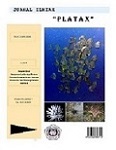Community Structure of Seagrass Meadows In Mantehage Island Waters, North Sulawesi
DOI:
https://doi.org/10.35800/jip.1.4.2013.3699Abstract
Research on the structure of seagrass communities in the waters of the island Mantehage was conducted in September 2010. The purpose of this study is to collect data and information on the structure of seagrass communities. Observations includes the identification seagrass species, measuring the number of individual/stand, cover percentage of each type/species on the transect. 6 types of seagrass found, i.e. Enhalus acoroides, Halophila ovalis, Thalassia hemprichii, Thalassodendron ciliatum, Cymodocea rotundata and Syringodium isoetifolium. Seagrass species composition and distribution varies at each location and is dominated by the presence of Thalassia hemprichii (48.14%) with coverage percentage ranges between 15.91% to 35.11%. Diversity index values ranged from 0.79 to 1.69 ; evenness index between 0.57 to 0.94 and the index of dominance between 0.20 to 0.56. In conclusion, the condition of seagrass meadows in Mantehage island is relatively good and can support marine life adequately.
Keywords : Structure communities, seagrass, Mantehage Island
Downloads
How to Cite
Issue
Section
License
COPYRIGHT
Authors who publish with this journal agree to the following terms:
Authors hold their copyright and grant this journal the privilege of first publication, with the work simultaneously licensed under a Creative Commons Attribution License that permits others to impart the work with an acknowledgment of the work's origin and initial publication by this journal.
Authors can enter into separate or additional contractual arrangements for the non-exclusive distribution of the journal's published version of the work (for example, post it to an institutional repository or publish it in a book), with an acknowledgment of its underlying publication in this journal.
Authors are permitted and encouraged to post their work online (for example, in institutional repositories or on their website) as it can lead to productive exchanges, as well as earlier and greater citation of the published work (See The Effect of Open Access).




















